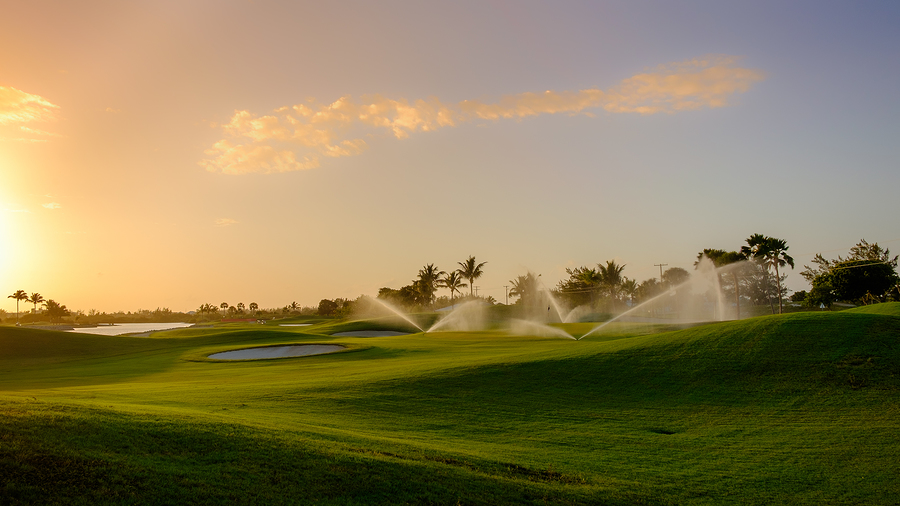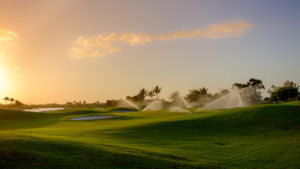
07 Apr The Reality of Upgrading Irrigation
 For golf course superintendents, the number one priority is to provide golfers with the best possible playing conditions. And as we all well know, that is no easy feat especially when it comes to turf management. Your course’s irrigation system plays a huge part in that. The challenge lies in the fact that it is probably the most expensive investment on a golf course but it can have the biggest impact. When considering making upgrades to your course’s irrigation system, it’s important to understand what’s really involved. Here’s a glimpse at the reality.
For golf course superintendents, the number one priority is to provide golfers with the best possible playing conditions. And as we all well know, that is no easy feat especially when it comes to turf management. Your course’s irrigation system plays a huge part in that. The challenge lies in the fact that it is probably the most expensive investment on a golf course but it can have the biggest impact. When considering making upgrades to your course’s irrigation system, it’s important to understand what’s really involved. Here’s a glimpse at the reality.
Upgrade Doesn’t Mean Replace
First of all, the price tag alone makes it practically impossible for supers to get funding to replace the entire system (costing in the neighborhood of 1 million+). Sometimes it is indeed necessary, depending on the age and condition of the system, but in in the majority of cases, you don’t need to. Upgrading parts of it will improve the playing conditions tremendously. You’ll want to consider the following:
- How old is the system?
- Is there landscape deterioration?
- Has the system required more water lately?
- Has there been an increase in the amount of service to the system? And what did the service entail?
- Have maintenance costs to maintain the system risen?
- Have the area regulations changed?
Upgrading it could mean something small, like changing out the sprinklers or replacing valves. It could be larger items, like piping or wiring. It’s important to think it through and make the decision carefully, since even a partial upgrade can cost upwards of $250,000.
Managing Expectations
Before proceeding on the upgrade of a golf course irrigation system, it’s also important for your members and course management to understand that when you make any changes to the course’s irrigation system, the improvements won’t happen overnight. It’s also not a cure-all for every turf issue on the course. It’s important to be up front about this to avoid drama later.
In addition, players also foolishly think that when you upgrade a course’s irrigation system that there will no longer be a need for hand watering and that a few of your green’s staff can be let go. They get excited over the idea that they won’t have to worry about running into staff watering greens during a round. Again, this is a misconception—and it’s important you communicate that beforehand. Hand watering will never go away and there’s always other work that needs to be done across the course to help maintain it.
There’s a Learning Curve
Once the upgrades are installed, there’s also a learning curve involved. Watering across the effected parts of the course will need to be monitored closely and adjusted as needed. Some dry spots will disappear, while new ones will pop up where you weren’t expecting them. Same goes with wet spots. It takes time to find the right arc, timing and flow to create the right balance. There’s also advances in technology that will take some getting used to (like smart controllers and soil moisture sensors), as well as the educational side of learning how to adjust and troubleshoot any problems that may arise with a new technology.
Soil & Water Consulting Can Help
If you’re unsure about what upgrades to make to you irrigation system, it’s time to call in a professional. My history as a turfgrass consultant, combined with the water analysis resources available to us via Brookside Laboratory, give us the power to help you properly identify what upgrades are necessary and set you up for success.


